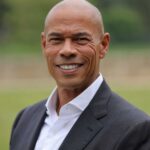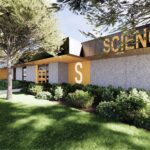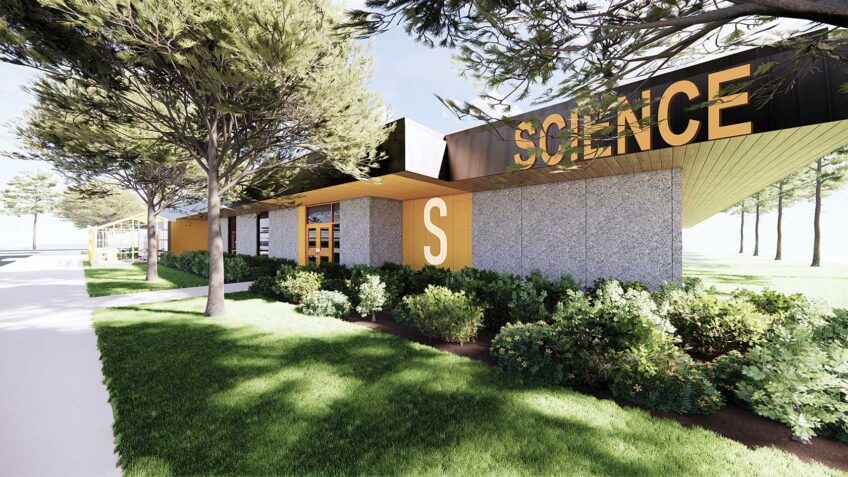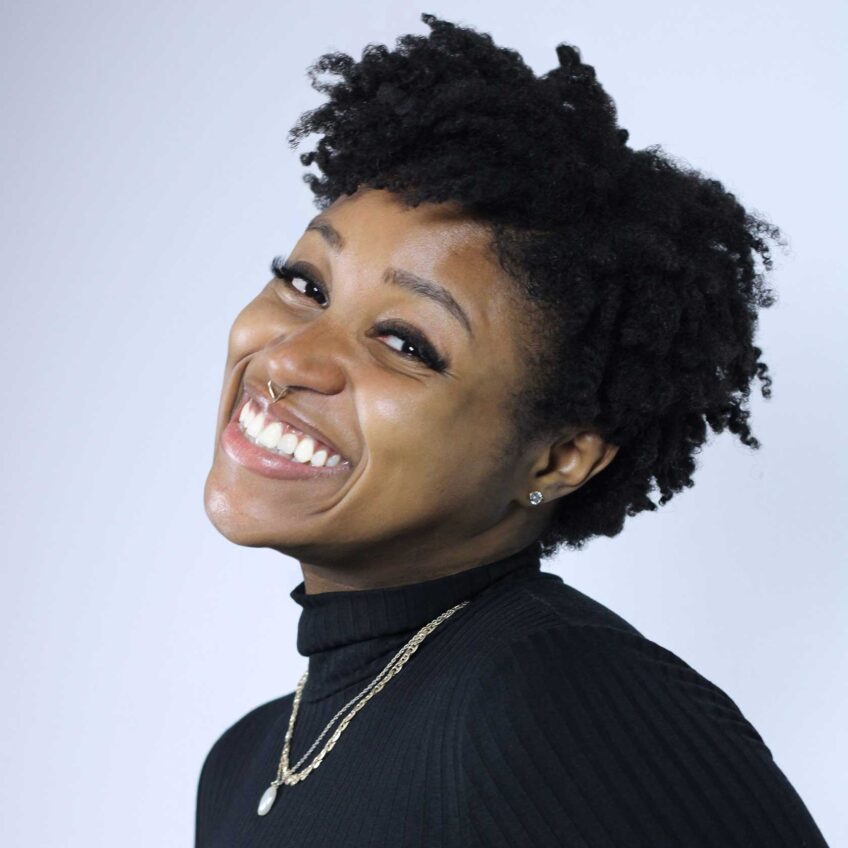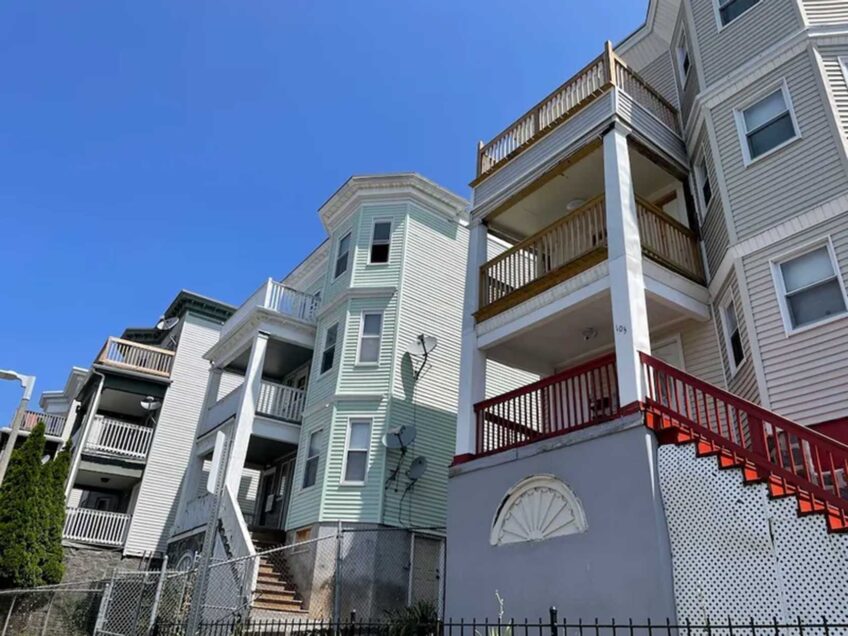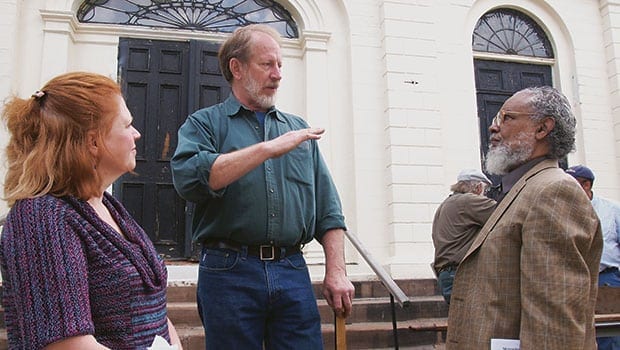
The moment when the clock in the First Church of Roxbury stopped working was not marked, but several years ago, it did.
The moment when it started, however, was penciled on the interior of the wooden enclosure that houses the 19th century mechanical wonder.

The clock faces broadcast the correct time to the Roxbury community.

The inner workings of the circa 1863 E. Howard & Co. clock. Above are the four shafts turning the hands on the four faces of the clock. (bottom) A bell from the Paul Revere & Son foundry tolls every hour.

The inner workings of the circa 1863 E. Howard & Co. clock. Above are the four shafts turning the hands on the four faces of the clock. (bottom) A bell from the Paul Revere & Son foundry tolls every hour.
“Clock commenced August the 26, 1863,” reads the graffiti.
That note was among the many discoveries made by Dave Graf, proprietor of Town Clock Restoration and Repair, one of an array of specialists working on the $3 million renovation of the historic church, built in John Eliot Square in 1804.
Drawing from his extensive experience with 19th-century clocks, Graf got the clock running once again.
“It was clear that it was mostly all still there and mostly original,” Graf told members of the Unitarian Universalist Urban Ministry and community residents who gathered at the church Saturday to celebrate the clock’s revival. “It’s a tribute to how well it was made that all the parts were in working condition.”
The restoration of the clock is the latest milestone in the church restoration project. Earlier in the year, the edifice was stripped and repainted in a historically accurate shade of white. Woodwork was restored, windows replaced and the shutters removed for reconstruction. The church’s organ was partially restored and work has begun in the restoration of the interior.
While the clock’s four sides face outward, its 19th century works are tucked away in the heart of the steeple. Inside the enclosure that protects the brass, iron and steel works from wind, rain and pigeons, Graf pointed out the fine workmanship of the clock, built by the Roxbury-based E. Howard & Company.
Below, a 70-pound pendulum hangs at the end of an eight-foot-long cherry wood shaft, its back-and-forth motion that marks the steady flow of seconds, minutes and hours conveyed via four long shafts to the four faces of the clock. Inside its wooden enclosure, the clock works sit in a cast-iron box. The brass gears show little wear for their 154 years of service.
Edward Howard of Roxbury founded his clock company, E. Howard & Co., in 1858. He had apprenticed with Aaron Willard Jr., scion of the famous Roxbury clock-making family. His clocks adorn many Boston-area buildings from the 1800s.
“He’s in the tradition of early American clockmakers,” Graf said. “He knew his clocks would have to work at 10 degrees and at 100 degrees. He built them to withstand those conditions.”
Most of Howard’s clocks could run for eight days between windings. The clock at First Church, which is wound by raising a wooden box weighted with rocks, is set to run for seven days from a winding. Graf says Howard’s clocks can be accurate to within one minute a month.
When the clock was installed in the First Church, it replaced an earlier clock, which Graf says may have been produced by Willard.
While restoration work on the clock is nearly completed, work on the church’s interior has just begun. Carpeting and upholstery have been removed. On the exterior, wooden fans that were atop two of the church’s front doors were removed to reveal two federal-style windows.
“These windows, I believe, are from the 1804 construction of the building,” said Andrea Gilmore, a historical restoration specialist who is working on the project pro bono.
Gilmore is looking into restoring some of the interior lighting, much of which ran on gas, not electricity.
The church itself is the fifth meetinghouse on the site since Puritans first erected a church there in 1632. The fourth meetinghouse, built in 1744, had served as a signal station for the colonists’ army during the 1775 siege of Boston and was damaged by British cannon fire. Although the fourth meetinghouse continued to be used as a church after the war, it remained structurally compromised and was demolished for the construction of the 1804 building.
The current building and its clock are relics of the early years of United States history, a fact that’s not lost of Graf. Now the clocks four faces project the correct time to those Roxbury residents who aren’t too busy to look up from their smart phones. A bell forged by the Paul Revere & Sons foundry is located in a belfry above the clock, and tolls on the hour. The arrangement hearkens back to an era before most people owned watches, when meetinghouses played a prominent role in Roxbury’s civic life.
Graf, who lives in Maine, won’t benefit from the clock’s accurate timekeeping, but nevertheless, he takes satisfaction in the work he’s done to get it running again.
“It’s really great to be associated with a vintage clock like this and to see it still running in the community,” he said.


